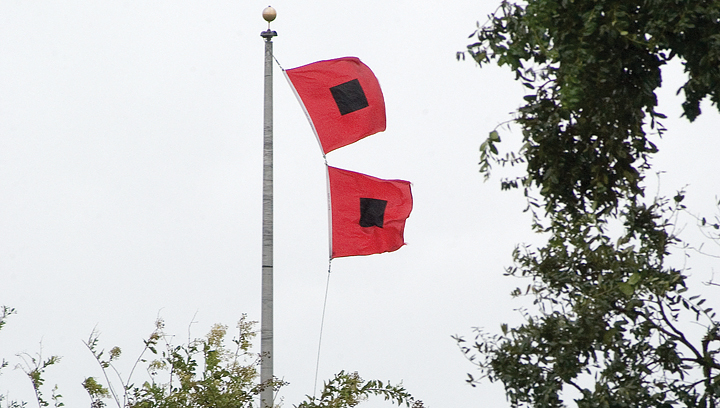Emergency responders from around the region, including Wrightsville Beach, held a comprehensive hurricane preparedness drill last week to prepare for the official start of hurricane season.
The drill, held on June 1 at New Hanover County’s Emergency Management Center, involved a series of tasks for each agency. Wrightsville Beach Fire Chief Glen Rogers was in attendance and at least 210 personnel from around the region participated, New Hanover County emergency management director Warren Lee said.
“It went really well, we had a lot of participation,” Lee said.
The drill came as the Cape Fear region had consecutive warnings about tropical storms, first with Tropical Storm Bonnie on June 4, and then Tropical Storm Colin, for which there were coastal storm warnings issued on late Monday and early Tuesday of this week. The warnings were short-lived, as the storm died out before having a significant impact on the region.
However, had the storms been more powerful, first responders around the area would have a better understanding of how to react thanks to the specific scenarios that the hurricane exercise laid out for the emergency personnel, Lee said.
And they would also have a better understanding of how to use the primary tool to coordinate the response, an online management system called WebEOC, which is required by the state for emergency management centers.
During the exercise, emergency personnel were presented with 186 different “injects,” which present real-world scenarios to test how the first responders react, judging by the conditions and the information relayed over the WebEOC system. Many of the participants in the event logged in through the WebEOC system and didn’t travel to the emergency center, including representatives from University of North Carolina Wilmington, New Hanover Regional Medical Center, Carolina Beach and Kure Beach, among others.
There were several injects presented for Wrightsville Beach, Lee said.
For example, a 9:10 a.m. call for Wrightsville Beach reported two people swept off the jetty, one with head trauma and the other missing in the water. With rough seas, officials decided whether to call off the rescue attempt, over the objections of family members. The inject also included a wrinkle: the family of the missing person requesting to be put in a hotel until the search resumed.
In another scenario, Wrightsville Beach requested a backhoe and bulldozer, requiring emergency managers to find a local source and determine costs, an issue if the storm hasn’t yet been declared a federal disaster. One inject called for the evacuation of a 92-year-old woman from the 900 block of Conch Lane. The issue: emergency vehicles didn’t want to cross the Heide Trask Drawbridge at the wind speeds predicted.
The injects were developed by New Hanover County emergency management manager Steven Still, and included the storm’s track, its intensity and activities that might be expected in a real event, Lee said. Still was a member of the Wrightsville Beach Ocean Rescue squad from 1998 to 2009.
Running through the scenarios let emergency management detect and work out minor issues with the WebEOC system, Lee said, adding that, overall, the exercise helped improve cohesiveness and planning in advance of storm season. Colorado State University’s Tropical Meteorology Project forecasts 12 named storms, five hurricanes, two major hurricanes, 50 named storm days, 20 hurricane days and four major hurricane days for this season.
“It brings together folks who don’t work together day-in, day-out,” Lee said. “So if in an emergency you need something from an individual, it’s not someone you haven’t met.”
Email [email protected]




